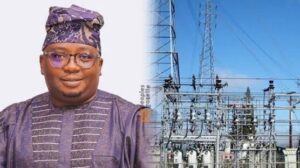Electricity: Bidding for an elaborate metering coverage to distill controversies
Metering has been a major subject in the discourse of the Nigerian power sector. Of the architecture deficits confronting the sector, metering has been identified key among many others from the distribution end. The importance of an elaborate metering system has largely been identified to boost power management, supply, as well as give reflections of uniformity and precision in charges, against the prevailing estimated billing system.
One solution attached to clearing the controversies over tariff has been the need for an overarching metering system. This has been identified to bear relevance to enhancing a reliable system of determinable energy charges by usage, without fear and suspicion of undue billing system, as have been lamented largely by ummetered electricity consumers who have been decrying cases of inconsiderate and exorbitant charges. Complaints over incommensurate charges and energy-consumed attached to the billing system have been rife, mostly among unmetered power consumers.
The unsettled controversies have occasioned a phenomenon in the sector, as larger part of electricity consumers are still not captured under the metering system. The symbiotic reflections have been diverse, among which the distribution companies (DisCos) would have to suffer deficits in revenue and returns, as many unmetered consumers are largely conditioned to pose resistance to payment of bills, believing they are been short changed and randomly charged.
The impacts have been noted to inform operational losses and inefficiency along the working tiers of the power architecture. For instance, continuous rejection of supply loads from the transmission company to certain destinations by DisCos, borne by poor returns from those areas, have formed operational discharge and waste, unhealthy to the entire system.
Still emphatic, a robust system that captures virtually every consumer, if not all, under a metered architecture of determinable framework is pertinent to distill the fuming controversies clogging-up the power sector, particularly from the distribution end. While the metering project has been on, it is apparent its pace of coverage is still crawling to get the desideratum as would be required in a near distance.
Report released recently by the National Bureau of Statistics (NBS) revealed that the DisCos metered about 3.51 million customers in 2020. The NBS report presented statistics on electricity from 2015 to 2020 and focuses on customer numbers, metered customers, estimated billing customers, and most importantly, electricity supply and revenue collected during the period under review. Breakdown of the report revealed that the Abuja Electricity Distribution Company (AEDC) recorded the highest number of metered customers in 2020 with 693,622. This was followed by Ibadan Distribution Company (IBEDC) with 671,035, while Yola Electricity Distribution Company (YEDC) recorded the least with 71,867. The NBS report indicated annual positive growth rates consecutively except in 2020. In 2015, metered customers were 3.15 million and rose slightly by 0.23 per cent in 2016. This also increased in 2017 and 2018 with 3.57 million and 3.58 million customers respectively. Metered customers in 2019 stood at 3.80 million, showing a 5.96 per cent growth rate, but went lower in 2020 when 3.51 million customers were metered. The report showed year-on-year positive growth rates in number of paying customers as 2015 figure was 3.85 million, 4.19million in 2016, 4.37 million in 2017, 5.05 million in 2018, 5.76 million in 2019 and 6.86 million in 2020.
Reports in March 2022, had noted plans by DisCos to cover the metering deficits in 18 months, in respect to their initial plan to close the metering gap by 2023. Data by the Nigerian Electricity Regulatory Commission (NERC) had showed the registered energy customer population stood at 12.78million of which only 4.77million (37.3% of the identified customers) were metered as of September 2021, leaving the unmetered population-metering gap at 8.01million customers (62.7% of the registered customers).
To tackle the gap in metering architecture, the NERC had introduced the Meter Asset Provider (MAP) regulation, which became effective on April 3 2018, to facilitate a faster route to roll out meters through the engagement of third-party investors for financing, procurement, supply installation, and maintenance of electricity meters. However, the programme was challenged by factors such as increase in import levy on electricity meters to 35% from 10% in 2019, and demands for payment by electricity consumers before the provision and installation of meters, among others. The CBN, to cover up, had also initiated a mass metering plan, the National Mass Metering Programme (NMMP) in October 2020, yet the coverage of the system is still largely deficient in its scope.
Since statistics have shown upward scale in the record of payment for energy consumption with increasing metering coverage, it is thus justifiable that metering is a plausible solution to addressing the problems of revenue shortage and returns for DisCos. Hence, it is in this light a determinable system standing against resistance to what consumers may believe as unfair or undue charges, when they are unmetered.
However, in as much as the vitality of the metering system has been acknowledged, it is still worrisome that the pace of its coverage is largely limited. With its significance, such crawling profile is unsavoury. While reports have revealed upward increase between 2015 – 2019, a shortfall in 2022 is an unwelcome draw back. Even, noticeable, the increase between 2015 to 2019 in metering records, were apparently insignificant, in relation to the pressing demands and necessity. It has become necessary that efforts be intensified by the DisCos to push forth provisions towards a broad architecture of a metering system that captures the enormous majority of electricity users. The role of the Government to grant interventions and incentives to push the drive is pertinent.




